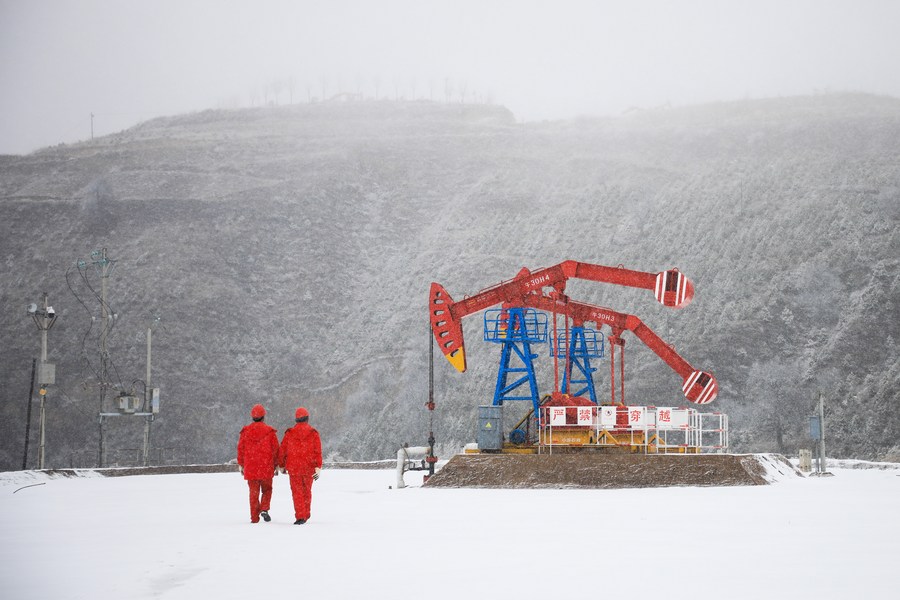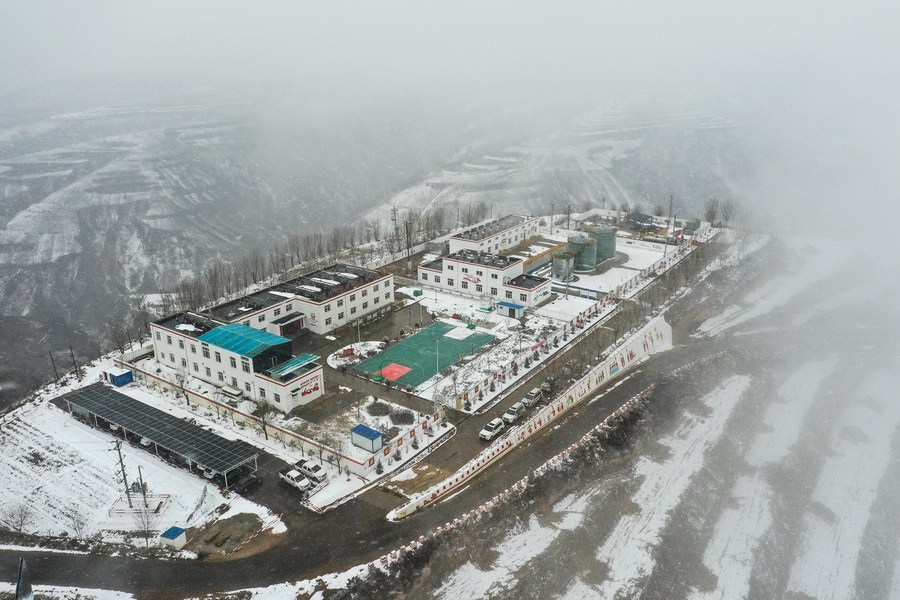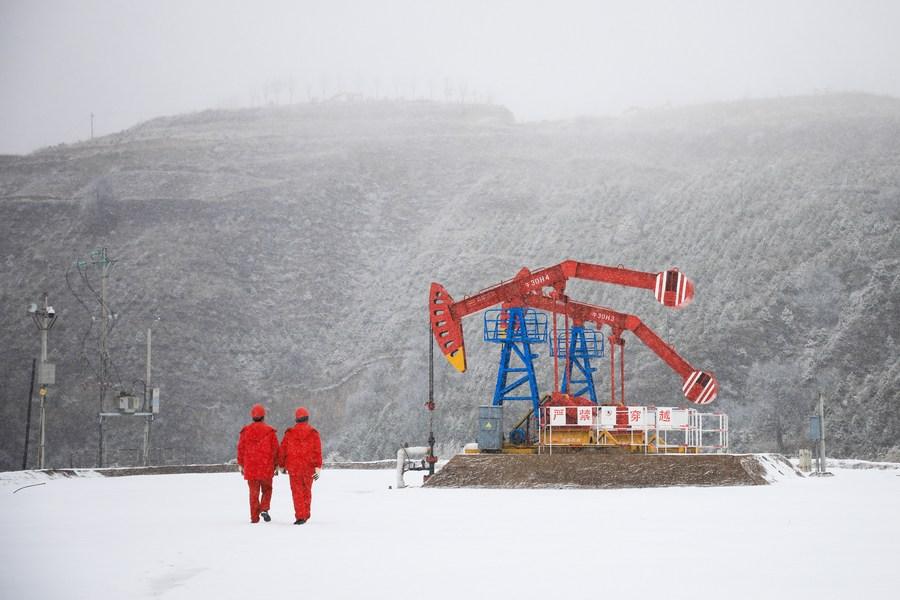
Photo taken on Dec. 10, 2021 shows the Nanliang operation area of Changqing oilfield in northwest China's Gansu Province. (Xinhua/Ma Xiping)
LANZHOU, Jan. 13 (Xinhua) -- After a heavy snowfall, the Ziwuling nature reserve in northwest China's Gansu Province is wrapped in all silver, below which exists vast untapped natural resources.
Not far from this area several red machines lie scattered over the H9 platform of Changqing oilfield, which is exploring green transition for low-carbon development while preserving the natural reserve's ecology.
"Backward management often led to poor sewage treatment in the past and the pungent smell of oil and gas could be sensed everywhere," said Zhao Aibin, deputy head of the No.12 oil production plant of Changqing oilfield. "At that time, the drilling rigs 'drank' diesel oil and 'spat' black smoke. The production sites were always noisy and dusty."
As electric motors are now employed to power drilling rig systems and equipment, Changqing oilfield, China's largest oil and gas field with a history spanning more than 50 years, has been pursuing green and low-carbon development while increasing production.
The oilfield is located in the hinterland of the Yellow River basin, with 16 ecological protection zones and 48 tributaries of the Yellow River distributed in the area. In recent years, Changqing oilfield has shut down nearly 1,000 oil and gas wells in nature reserves and water sources areas.

Aerial photo taken on Dec. 10, 2021 shows the Nanliang operation area of Changqing oilfield in northwest China's Gansu Province. (Xinhua/Ma Xiping)
Thanks to technological innovation and improved management, the annual oil and gas output of the oilfield had increased from 50 million tonnes in 2013 to 60 million tonnes in 2020. The total number of workers, however, has remained within 70,000, marking an increase in production and efficiency.
In the past 12 years, Changqing oilfield has constructed 88,000 new oil and gas wells. Through innovations such as horizontal wells, the oil field has saved nearly 43,000 hectares of land -- equivalent to 60,000 standard football fields.
The H9 platform, which covers an area of only over 2.67 hectares, boasts wells extending several kilometers underground and has access to about 2,000 hectares of underground reserves.
In the Gucheng operation area of the No.12 oil production plant, the artificial forest area is composed of 120,000 lush green trees, with the green coverage rate reaching 90 percent.
"The oil reservoir at a depth of more than 2,000 meters underground is similar to a piece of streaky pork, with multiple oil layers. In the past, only one layer of the reservoir was developed in the Gucheng operation area," said Ma Hong, head of the No.12 oil production plant of Changqing oilfield.
"The technological upgrade has made deeper development possible, injecting new vitality into the old wells," Ma said.




 A single purchase
A single purchase









